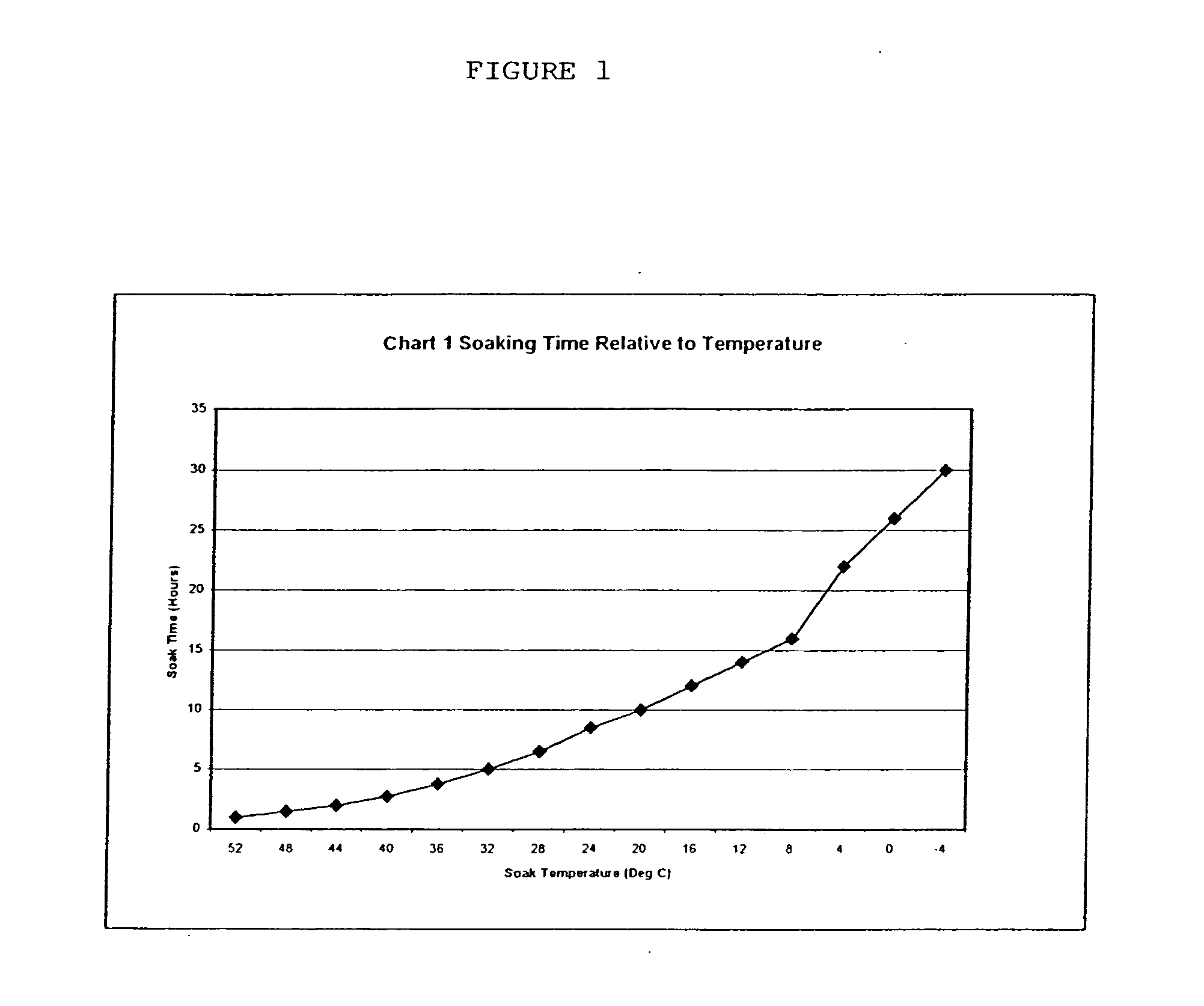Amylose and amylopectin derivatives
a technology which is applied in the field of amylose and amylopectin derivatives, can solve the problems of increasing the amount of emulsifier needed, affecting the quality of amylose, and constantly battling the methods of combining hydrophobic substances
- Summary
- Abstract
- Description
- Claims
- Application Information
AI Technical Summary
Benefits of technology
Problems solved by technology
Method used
Image
Examples
example 1
1. Prepare a 35% solids solution by slurrying purified pea starch in warm water to which has been added sufficient sodium hydroxide to produce a slurry with a pH of 10 and maintain by stirring and temperature control for 3 hours at 48° C. 2. Agitate well during this step. Cool the reaction to maintain 10° C. Add acetic anhydride at a constant rate while maintaining the pH of the slurry at pH 8.5 with added 9% sodium hydroxide solution. Add an amount of acetic anhydride that, when corrected for sodium hydroxide consumption, provides for a starch with a Degree of Substitution of 0.10. Maintain the temperature below 15° C. Dilute and wash the starch. 3. Make a 20% solids solution, pH 5.8, with water and a suitable acidulant, such as HCl. Heat to 95° C. to 105° C. and hold for 2-5 minutes. 4. Cool to 73° C. (the selected beginning of the temperature range for the following enzyme). 5. Treat with a suitable amount (0.00067%) of Ban enzyme and hold until the desired viscosity is atta...
example 2
1. Three thousand pounds of isolated pea starch are added to 630 gallons of water that has been prepared with 4.5 pounds of caustic soda beads and preheated to 45° C. 2. The slurry is allowed to soak at 45° C. for 2 hours and then cooled to 10° C. 3. Acetic anhydride (220 pounds) is added over the course of two hours concomitant with 100 pounds of 9% caustic soda solution so as to maintain the pH of the slurry at approximately 8.5. 4. When the required reactants have been added, the flow of caustic soda solution is stopped and the acetic anhydride is allowed to continue until the pH reaches 6.0. 5. The reacted starch slurry is washed using a liquid hydrocyclone array to extract a substantial portion of the dissolved reaction byproducts. 6. The washed reacted starch slurry is diluted with clean water to 22% solids. 7. The diluted slurry (220 gallons) is cooked in a steam jacketed, scraped surface kettle to 92° C. 8. The cooked solution is cooled to 72° C. 9. Three grams of B...
example 3
1. Isolated pea starch (770 pounds) is added to 165 gallons of water at 10° C. that has been prepared with 300 grams of caustic soda beads. 2. The slurry is allowed to soak at between 15 and 20° C. for 10 hours. 3. Seventy-two pounds of acetic anhydride is added over the course of 2 hours concomitant with 450 pounds of a 9% caustic soda solution so as to maintain the pH of the slurry at approximately 8.3. 4. When the required reactants have been added, the flow of caustic soda solution is stopped and the acetic anhydride is allowed to continue until the pH reaches 5.7. 5. The reacted starch slurry is diluted with 400 gallons of water and allowed to settle. After six hours of settling, the supernatant is siphoned off to remove dissolved reaction by-products. 6. The washed reacted starch slurry is diluted with clean water to 22% solids. 7. The diluted slurry (220 gallons) is cooked in a steam jacketed, scraped-surface kettle to 92° C. 8 The cooked solution is cooled to 72° C. ...
PUM
| Property | Measurement | Unit |
|---|---|---|
| Temperature | aaaaa | aaaaa |
| Temperature | aaaaa | aaaaa |
| Temperature | aaaaa | aaaaa |
Abstract
Description
Claims
Application Information
 Login to View More
Login to View More - R&D
- Intellectual Property
- Life Sciences
- Materials
- Tech Scout
- Unparalleled Data Quality
- Higher Quality Content
- 60% Fewer Hallucinations
Browse by: Latest US Patents, China's latest patents, Technical Efficacy Thesaurus, Application Domain, Technology Topic, Popular Technical Reports.
© 2025 PatSnap. All rights reserved.Legal|Privacy policy|Modern Slavery Act Transparency Statement|Sitemap|About US| Contact US: help@patsnap.com



